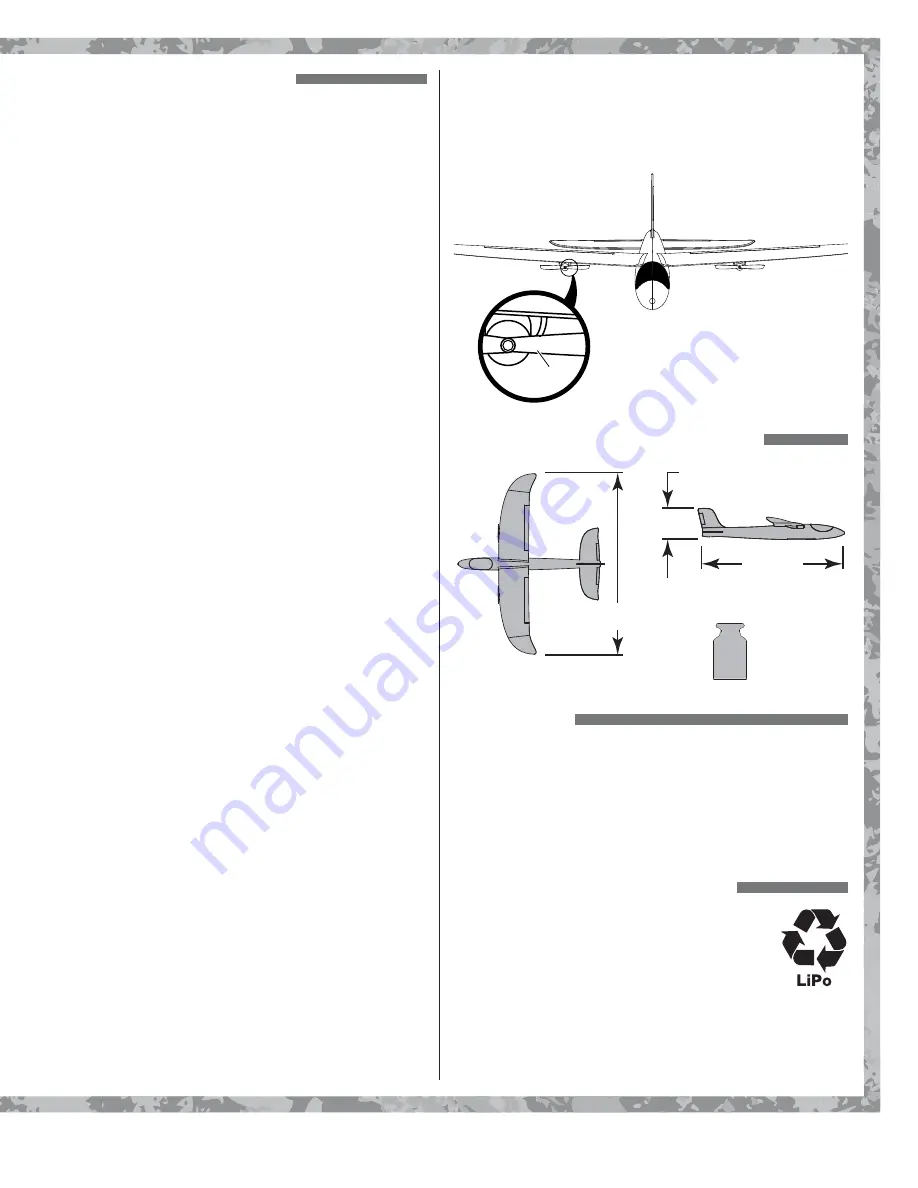
7
7
TROUBLESHOOTING
PROBLEM:
Transmitter LED does not illuminate when
tuned on.
Solution: Transmitter batteries are installed incorrectly.
Remove batteries and check polarity markings.
Solution: Transmitter batteries are low. Replace the
batteries.
PROBLEM:
The model does not respond to the transmitter.
Solution: The flight battery needs to be charged. Charge
the flight battery.
Solution: The battery is not plugged in to the plane. Plug
it in.
Solution: The plane is not linked to the transmitter. Power
down the transmitter and plane and try again.
Solution: The transmitter batteries are low. Replace the
batteries.
PROBLEM:
Flight time is short.
Solution: The flight battery was not fully charged. Let the
battery cool and charge again.
Solution: The flying conditions are too cold (below 60°F
or 15°C).
Solution: The battery is old or damaged. Replace the
battery.
PROBLEM:
The plane has excess vibration.
Solution: A propeller is damaged. Replace the propeller.
Solution: A motor shaft is bent. Replace the motor.
Solution: Motor base is loose. Reglue with CA or epoxy.
Solution: Motor base is broken. Replace motor base.
PROBLEM:
Propeller will not stay attached.
Solution: Propeller hub is worn. Replace the propeller.
PROBLEM:
The model does not fly straight.
Solution: The transmitter trim dial is not set properly. Adjust
the dial until the plane flies straight.
Solution: The motor base is loose. Reglue the motor base
with CA or epoxy.
PROBLEM:
The motors begin to slow down in flight.
Solution: When the flight battery voltage drops too low
the motors will slow down gradually until they
stop. Land immediately and recharge the battery.
Failure to land immediately may result in total
loss of control.
PROBLEM:
The battery won’t charge from the transmitter.
Solution: Replace the batteries in the transmitter.
Solution: Charge using a USB power adapter. (DIDP1125)
PROBLEM:
The props are spinning but the plane will
not fly.
Solution: The props are reversed. Pull the props off the
motors and swap their positions. The prop with
the “A” on the blade should be on the RIGHT
motor.
“A”
A
A
PLANE SPECIFICATIONS
13.8 in.
[380 mm]
Weight
Wingspan
Height
Length
18.9 in. [ 480 mm]
1.5 oz
[42 g]
3.1 in. [ 80 mm]
SERVICE
If your Dromida product requires repairs or replacement,
contact:
Hobby Services
9am-5pm Central Mon.-Fri.
3002 N. Apollo Drive, Suite 1
(217) 398-0007
Champaign, Il, 61822, U.S.A.
hobbyservices@hobbico.com
BATTERY RECYCLING
Be good to the environment!
The Twin
Explorer is powered by a rechargeable LiPo
battery. At the end of the battery’s useful life,
under various state and local laws, it may be
illegal to dispose of the battery into the municipal
waste system. Check with your local solid waste officials for
details in your area for recycling options or proper disposal.
We encourage contacting your local recycling center for
more information.


























